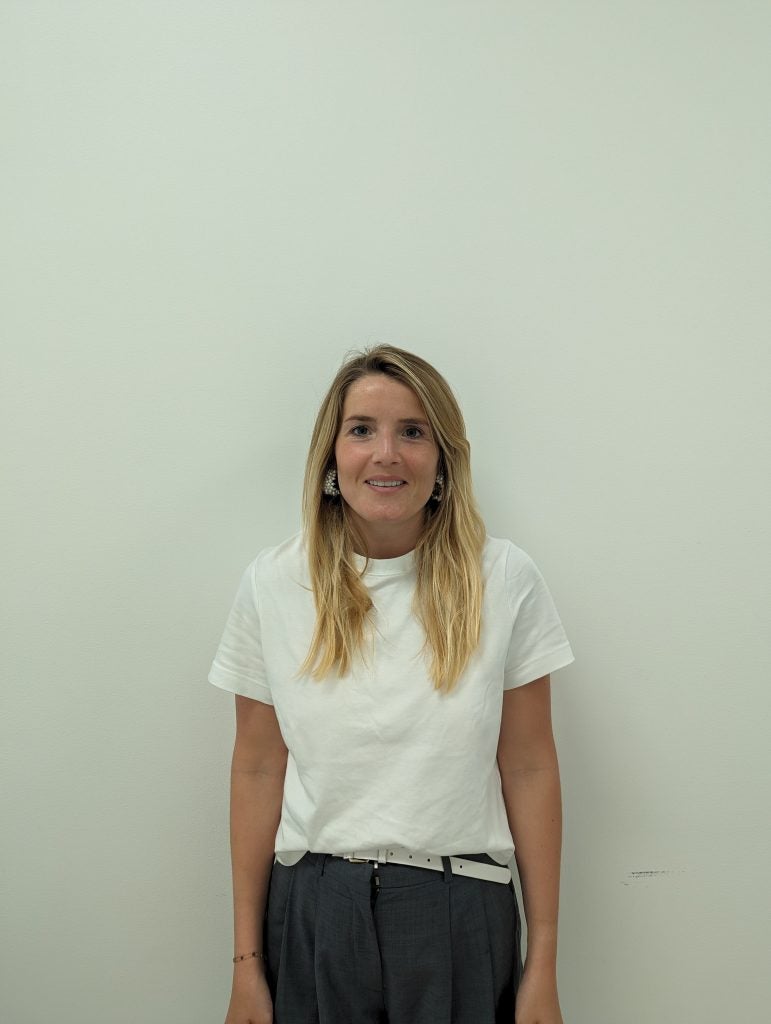
Sophie Gallay has been in her current role at French lingerie brand Etam for just over a year. On starting the position, the Etam group had no clear data strategy. “And when I say data strategy, I mean how we want to use data to create value,” Gallay clarifies.
Gallay’s mission was to bring disparate teams within the organisation together to create a “data office and factory”. Only then could Gallay proceed with the next part of her mission to develop an overarching data strategy for the group.
A recurring problem for every technology leader like Gallay is her business counterparts’ interest in jumping straight to use cases. In Etam’s case, her business colleagues were keen to use data to monitor and optimise retail performance. While Gallay welcomed this interest, it was clear that the foundations were not yet robust enough to deploy use cases.
Legacy systems needed sorting out first. “With no data quality, there is no real data governance,” says Gallay. Based on this, she did not have to convince her business counterparts of the investment needed. “It was clear we could only meet around 5% of the use cases with our current infrastructure. So, at some point, the reality was so obvious that we had to change,” adds Gallay.

General management wanted to move as quickly as possible on this change, but as with every large IT project, the balance between doing things too quickly and getting the data foundations right was critical. Convincing the business is always part of this challenge.
“I wanted to avoid recreating legacy systems but also taking too long to create these new data foundations and maybe losing our momentum,” says Gallay, who recognises that the latter scenario would also end up losing the support of the business teams anyway.
How well do you really know your competitors?
Access the most comprehensive Company Profiles on the market, powered by GlobalData. Save hours of research. Gain competitive edge.

Thank you!
Your download email will arrive shortly
Not ready to buy yet? Download a free sample
We are confident about the unique quality of our Company Profiles. However, we want you to make the most beneficial decision for your business, so we offer a free sample that you can download by submitting the below form
By GlobalDataGallay had to make the business teams understand the quantity of work that was required to achieve a group wide data strategy. “Rebuilding the foundations of a data model is real work, it is not just copying and pasting, and it will have long-term consequences for the business,” says Gallay.
Gallay’s data strategy began with a three-to-five-year plan, with a particular focus on the first year and a half where 70% of resources would be focused on creating a robust company data foundation. The remaining third of resources would be used to create value for the business teams. The plan was, after 18 months, to rebalance this allocation of resources to become more heavily weighted to creating business value.
The data plan is currently halfway through year one. By the end of 2024, Gallay says Etam will have a robust data foundation, a working data governance strategy and a complete skills base to make this a reality.
Mass market retail is not an easy business in light of current economic uncertainty. This meant Gallay had to be inventive with her headcount needs and not be too ambitious in what she was asking for, “replacing some skills with other skills, and trying to play with the headcount by asking for one or two more very specific skill sets, rather than ten more people”.
A robust data foundation is critial for AI deployment
In Gallay’s first year leading Etam’s data team it was important that innovation continued despite the need to rebuild the company’s data foundation. “Use cases feed the need for innovation, and this way the business teams and general management can actually see immediate value, and not wait a year to see some results,” she says.
Gallay has just put Etam’s data platform into operation and is starting to build use cases. “Now we have we have six months to deliver value,” she says candidly. The preparation of use cases while the data platform was under construction will pay off. “We are not starting from zero,” says Gallay.
“We plan to push into production at least two data science use cases by the end of this year, probably a dozen dashboards, and one or two exploratory AI use cases. I’m pretty sure that we will have at least tested one in 2024,” says Gallay.
Choosing a data partner: Snowflake’s AI expertise
Gallay took the business from an on premises data environment to the cloud, selecting cloud data platform Snowflake for a fully customised data platform approach. “Obviously, it is really complicated when you are choosing a partner for this kind of project, because it is a choice that will follow you for the next 10–15 years. So you need to choose the partner that will evolve with the market and provide you with the best solutions in three or five years from now. So that was an important part of the decision,” says Gallay.
Snowflake’s data platform enables businesses to deploy machine learning, AI and GenAI, which is what Gallay means by future-proofing Etam’s data partner choice.
“We see a lot of focus on AI in retail, like in any industry, but pretty much the same use cases: a lot of use cases around client service services, and now with GenAI’s qualitative conversational technology personalisation of the experience that is so much improved.”
Identifying the use cases that will bring the most value to the business involved brainstorming with Etam’s business teams – and these were clear from the outset, says Gallay. As a retailer, Etam has warehouse management and stock management challenges, which can have a huge impact on the bottom line. “We do not have the very lean supply chain that some big retailers have,” says Gallay.
Gallay highlights another use case focused on optimising Etam’s retail store landscape, especially in France. The company’s store network was built under better macroeconomic circumstances and before the growth of e-commerce. This network now needs rationalising, but the decision goes beyond simple economics.
“We are building models that forecast customer behaviour, so if we close a store we ask how do we move the revenue on to another stores? What about recruitment? Will we find these clients back online?” says Gallay. Retail teams would have traditionally undertaken such research but were only informed by financial data, not the full modelling forecasts that Gallay’s team can provide, complete with marketing impact, recruitment information and how a closure might affect surrounding stores.
On the marketing side, personalisation of the shopping experience is the number one priority, but “that is already a lot of use cases when you only have two data scientists”, says Gallay. So decisions had to be made about what was to be built in-house and what needed to be bought off the shelf.
Gallay decided to focus her resources on building things on the operational side. Because of Etam’s specific business of selling underwear, not all models are applicable to the business, whereas, at least for the short term, there are very advanced customer experience personalisation tools on the market that could help Etam move quickly on this front.
Technology has a ‘woman’ problem
Gallay is in a minority of women technology leaders, and like most successful women she says: “I have been pretty lucky.” Gallay teaches Master’s-level courses in data at France’s prestigious Science Po. Early in her career as a consultant, Gallay did not see a gender issue. It only became more of a challenge later, when at times Gallay found herself the ‘token’ woman on a team.
Technology recruitment is also an ongoing challenge. “In the pool of candidates for each job, we probably have one woman for nine men,” says Gallay, who pays particular attention to candidate sourcing, recruitment bias and even goes into schools to give speeches to pupils.
It is all about role models and Gallay is one by way of her gender. When she talks to young people in business or engineering schools about a career in data she talks about her own path. “I try to explain that I am not an engineer or a statistician. I never use Excel, but I’m still working in data,” she says.
There is another direction for women rather than pushing them into technical roles. “There are of women in business schools who could run data teams,” says Gallay, because data can be viewed as just another kind of asset. But it is equally important to help women succeed in technical studies, and to counter the damaging ‘geek’ trope, she adds. Gallay, herself, is as far from this stereotype as one gets and, either way, is the best person for the job of building a new data foundation at the Etam group.







